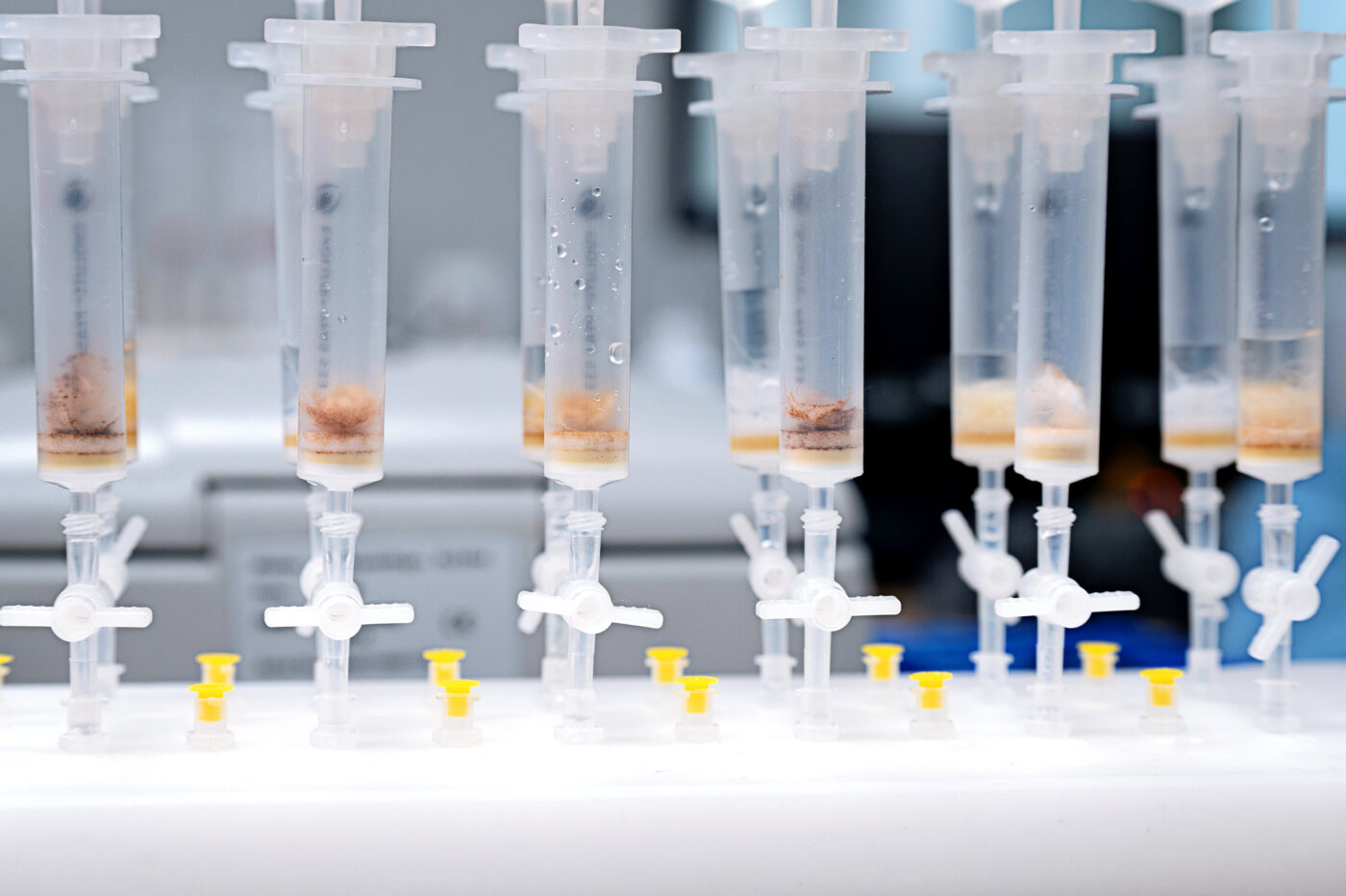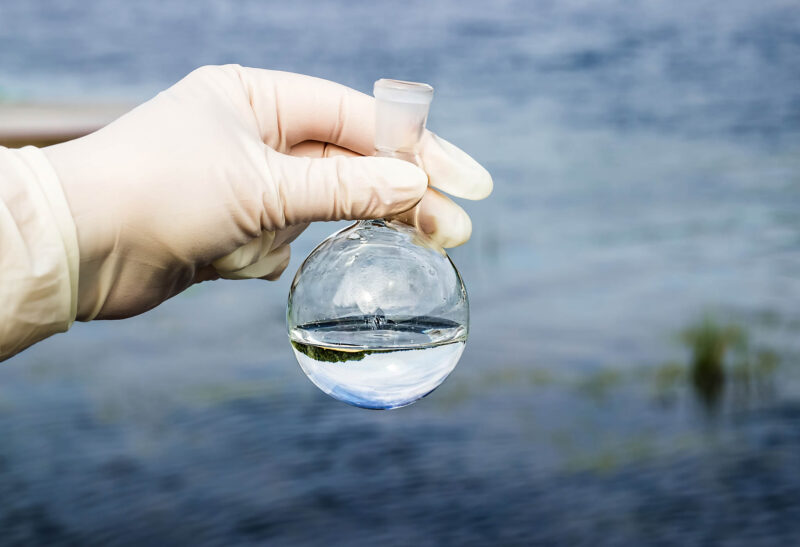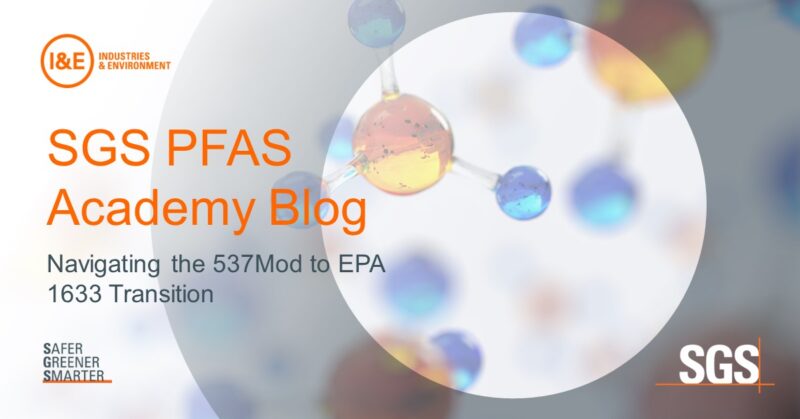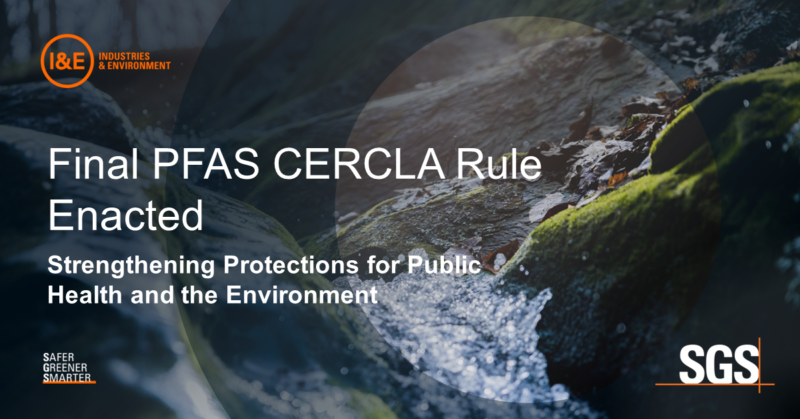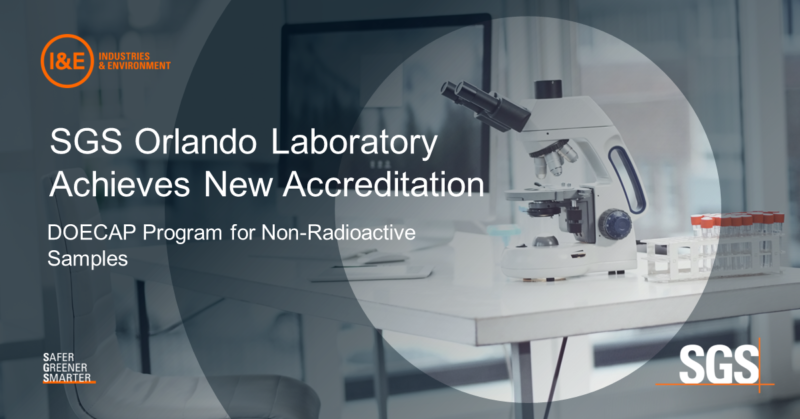PFAS Environmental Matrices
With more that 20 years experience in PFAS testing, SGS has the capacity, expertise, facilities, and track record needed to provide fast and accurate analysis on PFAS and emerging contaminants analysis.
We have pioneered commercial PFAS analysis in North America since 2003. As the acknowledged best practice leaders, we were chosen to develop and validate the EPA standard method 1633 for PFAS analysis.
EPA 537.1 and EPA 533 for Finished Drinking Water Testing
We are accredited and UCMR5 qualified with high capacity for drinking water testing across the US.
As PFAS MCLs are finalized and updated, SGS is well equipped to provide high-quality drinking water testing for compliance and other monitoring. There are two options available for drinking water testing and depending on state and program requirements, either EPA 537.1 or EPA 533 is applicable.
|
|
EPA 533 |
EPA 537.1 |
|
Target List |
25 |
18 |
|
Best practices (isotope dilution etc.) |
Yes |
No |
|
Short Chain PFAS |
Yes |
No |
|
Alignment with PFAS |
Yes |
No |
|
1633 |
|
|
|
Suitable for Extensions |
Yes |
Limited |
EPA 1621 Organic Fluorine Screening
EPA 1621 measures organic fluorine in aqueous matrices using adsorption on carbon cartridges followed by combustion ion chromatography (AOF-CIC).
The method provides a single concentration for organic fluorine with blank limited method reporting limits of 1-2 μg/L. EPA 1621 is being recommended for wastewater samples to fulfill NPDES permitting requirements and is being promulgated by the EPA Office of Water. SGS is one of the first commercial labs to offer EPA 1621 and recently participated in the multi-laboratory validation organized by the US EPA.
EPA 8327, ASTM D8421 and D8535
EPA 8327, ASTM D8421 (aqueous) and ASTM D8535 (soil) are direct injection/quick extraction LC-MS/MS methods for specific target PFAS. When you need to make quick site screening or remediation assessment, they can be used to provide rapid 1–5-day turnaround time PFAS data. While not as definitive as EPA 1633A and more prone to interferences, they are useful when applied thoughtfully.
ASTM D8421 is also being promulgated along with EPA 1633A by the EPA Office of Water.
EPA 1633A: All Other Environmental Matrices
SGS developed and validated EPA 1633 for the US EPA and is the leading lab network on EPA 1633 with multiple accredited lab locations. EPA 1633 is used for:
- NPDES waste permitting and landfills
- All wastewater PFAS measurement applications
- All new DoD projects starting 2022
- Most ambient monitoring including surface/ground water, soils and sediments, tissue and vegetation
- Site characterization, remediation and due diligence
- All other target PFAS monitoring applications that align to the standard 40 list of PFAS
- With screening levels (RSLs) being published for additional PFAS such as TFSI and PFPrA, we now offer extended analysis for these targets under the EPA 1633A framework.
EPA 1633A is now finalized after completion of the multi-laboratory validation and is awaiting promulgation. It is recommended for use in all regulatory and non-regulatory contexts as the standard PFAS method for all uses other than drinking water compliance testing. While we may still support legacy in-house isotope dilution methods for PFAS (537ModID) for project continuity purposes, the expectation is that PFAS monitoring will switch over to 1633A almost entirely by end of 2025.
Extraction:
- Spike with isotopically labeled standards
- Solids: Sequential basic extraction
- Aqueous: pH adjustment
- Tissue: Sequentially/extended basic Extraction
Cleanup:
- Use of WAX cleanup for all analysis to deal with complex matrices
- Use of dispersive carbon cleanup
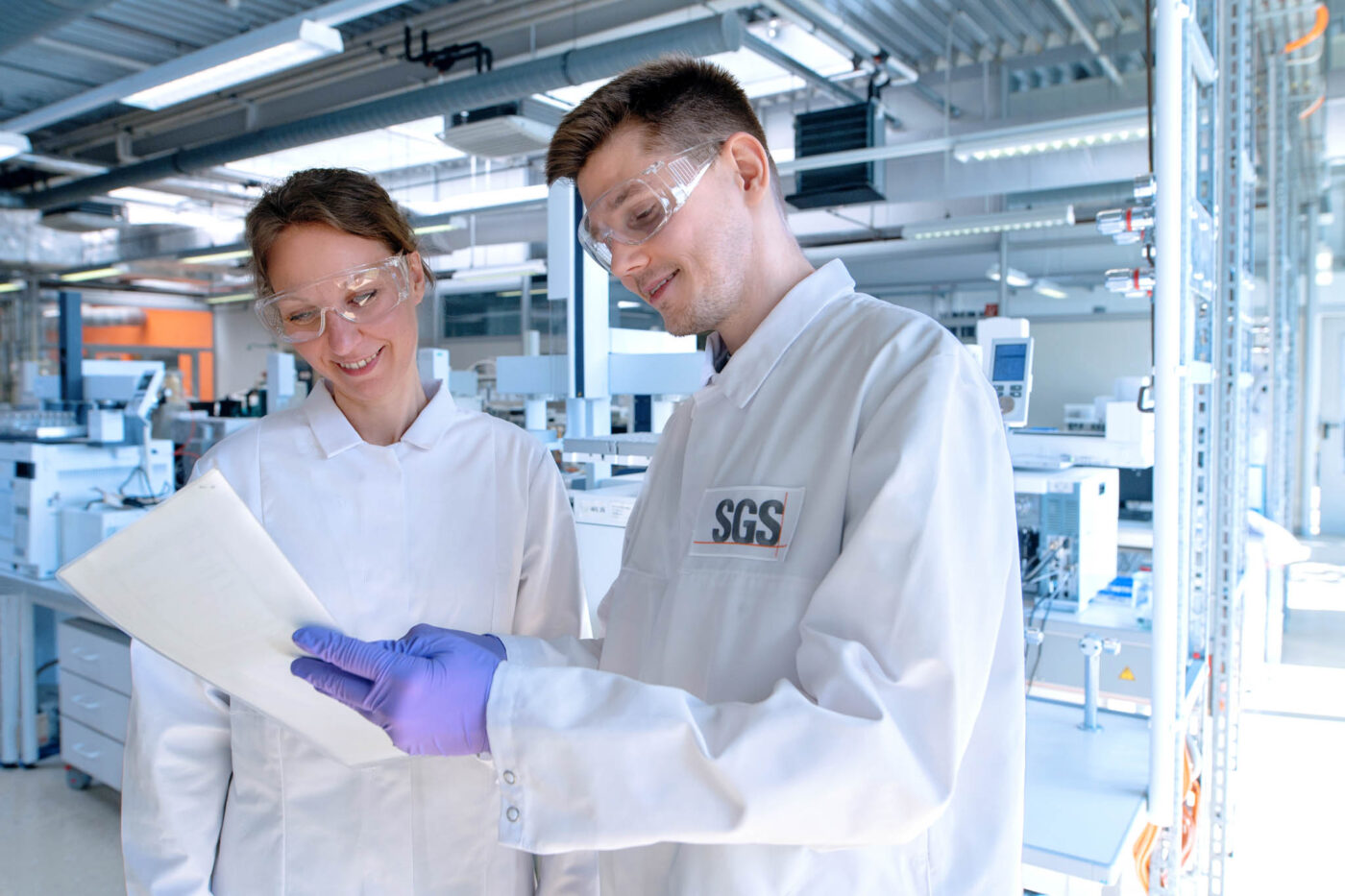
Reliable and defensible data is the cornerstone of informed decisionmaking, especially when dealing with substances as critical as PFAS. From sample collection to analysis and reporting, following these guidelines will help you maintain the highest standards of data quality, ultimately empowering you to make sound, evidencebased choices in managing PFAS.
Contact Us
For more information contact:
[email protected]
LC-MS/MS Analysis With Isotope Dilution/Surrogate Standard Quantitation
- Use of multiple transitions/ratios checks for interference monitoring
- Use of injection internal standards for surrogate recovery monitoring
- Use of bile acid check standards in tissue analysis
Ultrashort PFAS including Trifluoroacetic Acid (TFA)
We are constantly extending our PFAS capabilities and now offer ultrashort PFAS by LC-MS/MS.
Fluorinated substances with a chain length < 4 such as trifluoroacetic acid (TFA) have multiple known sources into the environment with TFA arising from atmospheric degradation of hydrofluorocarbons (HFCs and HCFCs), the oxidation and chain shortening of fluorotelomer PFAS and more. PFPrA is also likely formed from the degradation of fluorotelomer PFAS.
TFMS is used widely in organic synthesis and in lithium ion batteries. There is a significant gap in the occurrence, fate and transport of these PFAS, and our pioneering commercially available method will help you bridge this important gap. Reporting limits vary from 5-100 ng/L in water. Unlike other methods with compromised performance, this approach has been specifically validated to work for ultrashort PFAS.
Other ultrashort PFAS, such as PFPrA and TFSI, have EPA RSLs and may be amenable to either an ultrashort PFAS method or an extended 1633 approach.
Total Oxidizable Precursor Assay (TOP)
The TOP assay enables extended monitoring of precursor PFAS by oxidizing the sample to convert characterized and uncharacterized PFAS into perfluoroalkyl acids that can be reported using LC-MS/MS. SGS was one of the first commercial labs to offer the TOP assay and incorporates several quality enhancements to the TOP assay including isotope dilution and precursor monitoring for reaction completeness. We offer method alignment to EPA 1633A to ensure that data generated using the TOP assay is easily compared with 1633 PFAS data and is subject to the same rigorous quality control requirements. Additionally, SGS is one of the only commercial laboratories offering TOP assay for Ultrashort PFAS.
Beyond 40: Extended PFAS Monitoring
SGS is pushing boundaries on PFAS by extending our monitoring PFAS capabilities to 90 PFAS. From short chain sulfonamides, multiple ether PFAS, fluorotelomer alcohols and other functionalities, we offer comprehensive targeted and quantitative LC-MS/MS approach that enables you to expand your PFAS data world and unlock extended forensic and source attribution capabilities while avoiding the uncertainties of untargeted approaches.
|
METHOD/APPROACH |
NUMBER OF PFAS (90) |
|
1633 |
40 |
|
1633-Extended |
34 |
|
FTOH Inhouse |
6 |
|
Ultrashorts Inhouse |
5 |
|
8327/8421 Direct injection extension |
4 |
OTM-45 PFAS Air Measurement in Stack Gas
OTM-45 (Other Test Method) is a method released by the EPA as a draft for the measurement of semivolatile and nonvolatile PFAS in stack gas. The method is released by the EPA after limited validation as a draft and is currently undergoing revision before finalization. We provide all the media and PFAS-free water required, and our long experience with XAD preparation and cleaning ensures clean, reproducible batches of XAD free of background PFAS
Additional PFAS Air methods and expanded analyte lists are in development at SGS.
Why SGS for PFAS Analysis?
- Capacity: We have invested heavily in capacity and geographical coverage (10+ labs) and can offer 1–3 day turnaround options for screening level methods, and in some cases, fully determinative methods such as EPA 1633A.
- Support: We support every matrix from simple drinking water to complex spent media, tissue, serum and products.
- Expertise: We have been measuring emerging contaminants since the 1970s, PFAS since 2003 and have shaped PFAS best practices on storage, stability, sampling, interferences and more. Our leadership resulted in SGS authorship/validation of EPA 1633.
- Accreditation: Our dedicated North America-wide accreditation team plays a pivotal role in ensuring our continuous PFAS compliance is up to date with the latest accreditations, regulations, and industry standards.
- Network: Our nationwide (and global) network means you can leave the sampling supplies and sample delivery logistics to us and focus on your project.
- Innovation: We were one of the first networks in the DoD PFAS program and continue our long-standing support of DoD PFAS cleanup effort with industry leading data quality and TAT.
